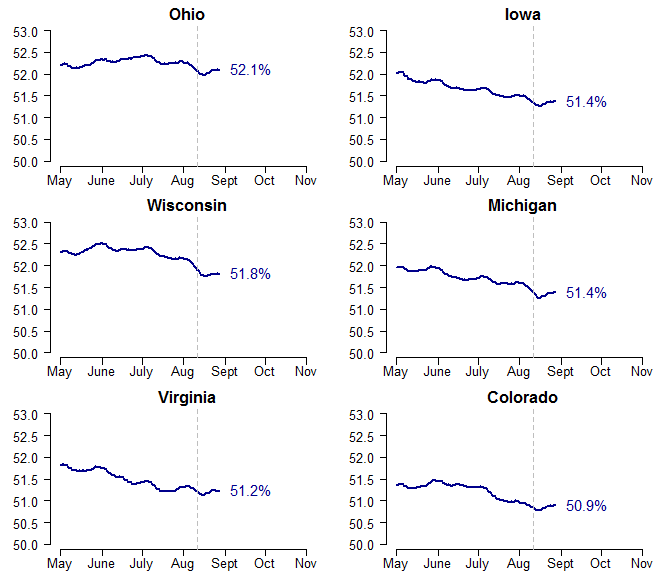I’ve added a new feature to the site to give us a better look at the state-by-state trends in voter preferences during the campaign. These can be found at the State Trend Detail link, for both Obama and Romney (though the two trends will be mirror images of one another). As I noted on Tuesday, the data indicate that Romney has been slowly, but steadily, gaining on Obama across a broad range of states since May.
Since there’s been so little overall change in public opinion so far, these trends are nearly impossible to see on the original Poll Tracker page. Those plots use a consistent – but very wide – vertical scale, which emphasizes the differences between, rather than within, the states. In the State Trend Detail, the ranges of the vertical axes are much narrower – and vary by state – to focus on where, and to what extent, attitudes are shifting within states. The Poll Tracker page still provides a broader view of the spread of the polls themselves.
Importantly, it doesn’t seem that there’s been any defining campaign event that could be responsible for these trends. The erosion in support for the president has been extremely incremental. The old standby explanation is that undecided voters are increasingly paying attention to the campaign, and cluing into the mediocre state of the economy. Absent (sadly!) any hard data on state-by-state campaign spending, this seems reasonable enough. I’m eager to see what the next few days of polling indicate about the effects of the RNC. Hopefully there will be some new post-convention polls out by Monday or Tuesday, so look for another update then.
Finally, a bit of housekeeping. The BEA released their second estimate of Q2 GDP growth on Wednesday: 1.7%, updated from 1.5% in the original report. Results from the next run of the model (which should be posted by tomorrow) will use this number for the baseline projection of Obama’s two-party vote share, which tics up slightly from 52.3% to 52.4%.

